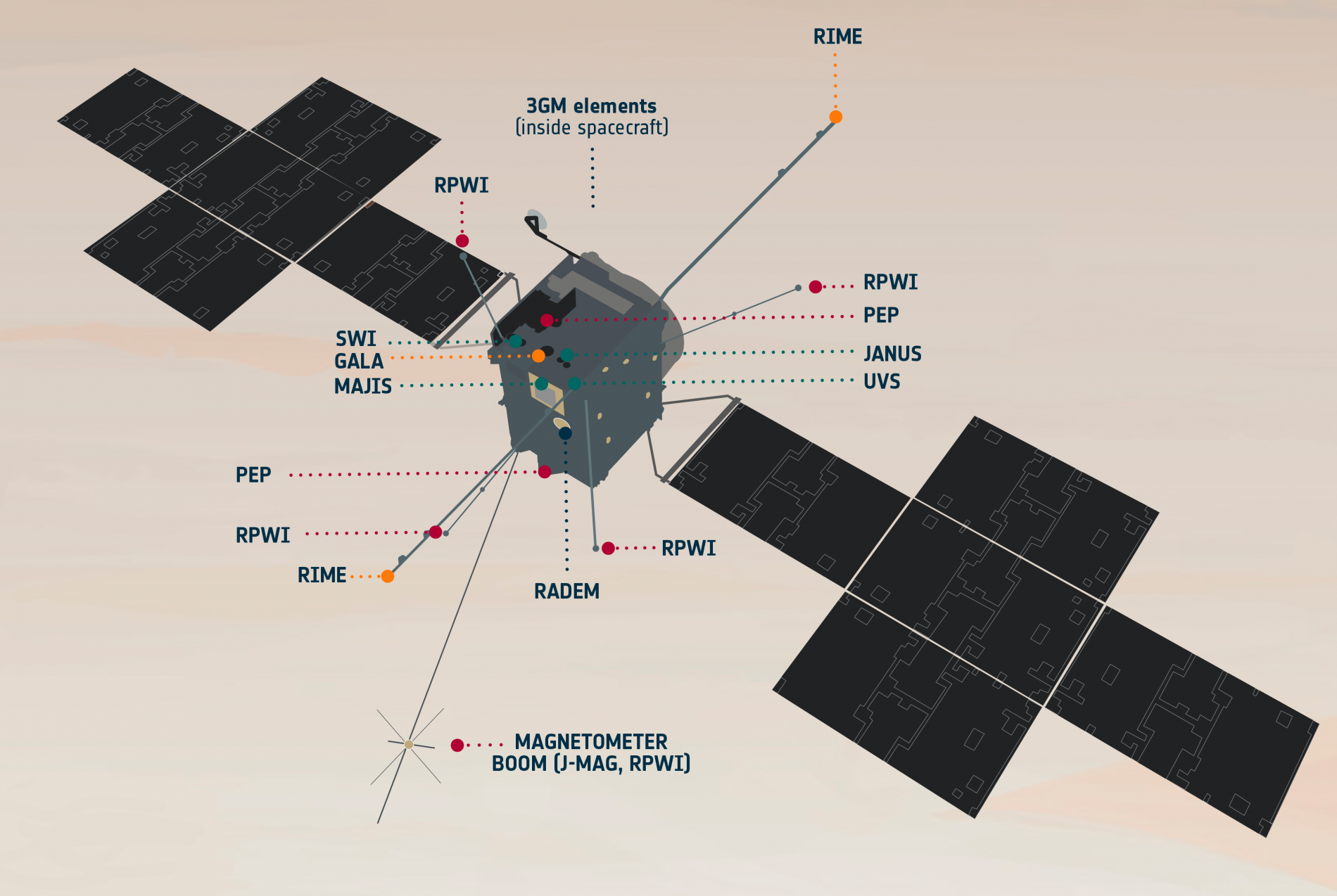JUICE mission takes off to Jupiter
JUICE, the European Space Agency (ESA) mission to study the icy moons of Jupiter, will be launched tomorrow 13 April from the Kourou Spaceport (French Guiana). The Institute of Astrophysics of Andalusia (IAA-CSIC) is participating in two of the mission's instruments, the GALA laser altimeter and the JANUS camera
JUICE, the Jupiter Icy Moons Explorer, will begin its nine-year journey to the Jovian system tomorrow, with the aim of making detailed observations of the giant gas planet and its three large oceanic moons (Ganymede, Callisto and Europa). It will be the first spacecraft to orbit a moon other than our own (Ganymede), and also the first to perform a Moon-Earth gravity assist to save fuel. The Institute de Astrophysics of Andalusia (IAA-CSIC) is the only Spanish institution contributing technologically to the mission, while researchers from the IAA-CSIC, the University of the Basque Country and the Centro de Astrobiología are participating scientifically.
The mission will investigate, on the one hand, the appearance of habitable worlds around gas giants and, on the other, the Jupiter system as an archetype of the numerous giant exoplanets orbiting other stars. JUICE will carry ten state-of-the-art instruments, including the most powerful remote sensing, geophysical and in situ payloads ever launched into the outer Solar System.
"We are part of the international consortia that are building two of the mission's instruments, the JANUS camera and the GALA altimeter, which will work in a complementary way to study the surface and interior of the satellites. JANUS will also analyze the planet's atmosphere and obtain complementary data with those of other instruments of the mission", highlights Luisa Lara, a researcher at the Institute of Astrophysics of Andalusia (IAA-CSIC) who is participating in the mission.

JUICE will face challenges like no other European mission: for example, the sunlight collected by its solar panels will be twenty-five times weaker than what can be collected when orbiting the Earth. The immense distances—hundreds of millions of kilometers from Earth—require a large 2.5-meter-diameter antenna on board to ensure sufficient transmission speeds for downloading scientific data. In addition, JUICE's complex trajectory around the Galilean moons will include an extraordinary number of gravity-assisted flybys. Finally, entry into orbit around Ganymede will require precise navigation and skillful maneuvering.
THE GALILEAN SATELLITES
Jupiter has more than ninety known satellites, including the four Galilean satellites, named after Galileo, their discoverer. These are Io, Europa, Ganymede and Callisto, which, together with Jupiter's faint ring and a trio of small moons (Amalthea, Metis and Tebbe), form a mini solar system, with orbits that are circular and flat with respect to the planet's equator. The discovery of these four large moons orbiting Jupiter marked the beginning of the Copernican revolution, which overthrew the belief that the Earth was the centre of the universe.
Today, the study of these moons may also be a revolution, as they have challenged the concept of habitability, previously only applicable to planets based on their ability to harbour liquid water: three of these moons, Europa, Ganymede and Callisto, show signs of harbouring oceans beneath their surface.
The system of Jupiter and its moons has thus become a clear target for the study of habitable environments. The JUICE mission will study, over three years, the planet's turbulent atmosphere and magnetosphere, as well as the surface of Europa, focusing on the search for organic molecules, and finally focusing on Ganymede, a satellite larger than Mercury and the only one in the Solar System with its own magnetic field.

The very high interest of this system is associated with a similar technological challenge. "The major technological challenge of the mission is highly constrained in two ways: on the one hand, no instrument must electromagnetically contaminate the J-MAG instrument, which will measure the weak magnetic field of Ganymede, possibly caused by an ocean of salty liquid water in its subsurface. On the other hand, Jupiter's environment is highly damaging to the electronics of the experiments and the satellite's solar panels, which has forced us to design the instruments with electronics capable of surviving very high levels of radiation, and to protect them with special enclosures. Likewise, the JUICE spacecraft has a powerful on-board computer and navigation system capable of autonomous operations and independent problem-solving, without the need to contact the Earth some 780 million kilometres away", says Luisa Lara (IAA-CSIC).
Instituto de Astrofísica de Andalucía (IAA-CSIC)
Unidad de Divulgación y Comunicación
Silbia López de Lacalle - sll[arroba]iaa.es - 958230676
https://www.iaa.csic.es
https://divulgacion.iaa.csic.es

